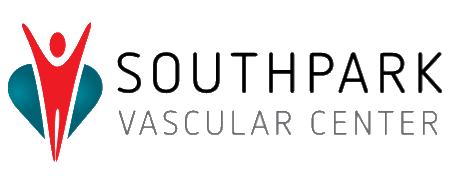What Are Uterine Fibroids? Fibroids, also known as uterine fibroids, leiomyomas, or myomas, are benign (non-cancerous) tumors that grow within the muscle tissue of the uterus. Who is at risk for uterine fibroids? Uterine fibroids are the most common tumors within the female reproductive system. 70-80% of women will develop fibroids. Women of African descent are 2-3 times more likely to develop uterine fibroids compared to women of European descent. What does the research say about uterine fibroids? Overview
Uterine Fibroids Symptoms Common symptoms associated with uterine fibroids. Excessive Menstrual Bleeding Heavy menstrual bleeding is one of the most common symptoms associated with uterine fibroids. Over time, excessive menstrual bleeding may lead to fatigue and anemia, which is a low red blood cell count. If left untreated, excessive menstrual bleeding may lead to the need for blood transfusions. A normal menstrual cycle occurs every 25-31 days and lasts from 3-7 days. Periods are considered heavy if a woman is: Pelvic Pain and Pressure As fibroids grow, they can put additional pressure on the surrounding organs, which can be extremely painful. The growth of the fibroids can cause consistent lower abdominal pain, as well as swelling in legs and the lower abdomen which can occasionally be mistaken for weight gain and pregnancy. Urinary Incontinence or Frequent Urination One of the organs commonly affected during the growth of fibroids is the bladder. As added pressure is applied to the bladder, frequent urination as well as urinary incontinence (loss of bladder control) may occur. Other Symptoms Other common symptoms include anemia, pain in the back of the legs, pain during intercourse, constipation, and an enlarged abdomen. Symptoms
There Are 4 Primary Types of Fibroids Common symptoms associated with uterine fibroids. Submucosal These fibroids develop under the lining of the uterine cavity. Large submucosal fibroid tumors may increase the size of the uterus cavity and can block the fallopian tubes, which can cause decreased fertility rates. Associated symptoms with submucosal fibroids include very heavy, excessive menstrual bleeding and prolonged menstruation. These symptoms can also cause the passing of clots. Untreated, prolonged, or excessive bleeding can cause more complicated problems such as anemia and/or fatigue, which could potentially lead to a future need for iron supplements and even blood transfusions. Pedunculated This type of uterine fibroid occurs when a fibroid tumor grows on a stalk, resulting in pedunculated submucosal or fibroids attached to the outer layer of the uterus. These fibroids can grow into the uterus and/or outside of the uterine wall. Symptoms associated with pedunculated fibroid tumors include pain and pressure as the fibroid may sometimes twist on the stalk. Intramural The most common type of fibroids, intramural fibroid tumors, typically develop within the uterine muscle and expand from there. When an intramural fibroid tumor expands, it tends to make the uterus feel larger than normal, which can sometimes be mistaken for pregnancy or weight gain. This type of fibroid tumor can also cause “bulk symptoms” and pelvic pain that is caused by the additional pressure placed on surrounding organs by the growth of the fibroid as well as excessive menstrual bleeding that may cause prolonged menstrual cycles and clot passing. Sub-serosal Sub serosal fibroids typically develop on the outer uterine wall and grow into the pelvis. This type of fibroid tumor can continue to grow outward and increase in size. The growth of a sub serosal fibroid tumor will put additional pressure on the surrounding organs, causing pelvic pain and pressure, and tend not to interfere with a women’s typical menstrual flow as much as the other types of fibroids. Depending on the severity of the location of the fibroids, other complications may accompany pain and pressure such as bloating, indigestion, constipation, and frequent urination. A woman may have one or all of these types of fibroids. Some fibroid tumors don’t produce any symptoms at all, while others can be severely symptomatic. It is common for a woman to have multiple fibroid tumors and it may be difficult to understand which or how many fibroids are causing the specific symptoms. Primary Types of Fibroids
If you have uterine fibroids, it is a good idea to discuss the various treatment options available for fibroids, including uterine fibroid embolization (UFE). Uterine Fibroid Embolization (UFE) The UFE procedure, also known as uterine artery embolization (UAE), begins with a tiny pinhole in the groin or wrist. Using specialized X-ray equipment, an Interventional Radiologist (IR) guides a catheter (small tube) to the uterine arteries. Then, small medical beads are injected through the catheter into the vessels feeding the fibroid, cutting off its blood supply. This shrinks the fibroid(s) over time. The catheter is then removed. The entire UFE treatment typically lasts less than one hour and is an outpatient procedure. Recovery only takes a few days. The bleeding symptoms tend to respond to treatment immediately whereas pressure/bulk symptoms take a few weeks to demonstrate a noticeable difference. Insert UFE YouTube Video here from Dr. Uterine Fibroid Embolization (UFE)
Is Uterine Fibroid Embolization (UFE) Right For Me? You may be a candidate for UFE if: Look beyond hysterectomy and discover UFE. A highly effective, minimally invasive procedure, UFE takes less than an hour to perform. Clinically proven to reduce the major symptoms of uterine fibroids, UFE has become one of the most successful alternatives to hysterectomy procedures. Key Advantages UFE is a safe treatment option and like other minimally invasive procedures has significant advantages over conventional open surgery. That’s why 90% of all women were “satisfied” or “very satisfied” at final follow-up after UFE. Benefits Risks Although UFE complications are rare, any medical procedure carries some degree of risk. Despite the low risk factor, it is important to understand the potential complications associated with UFE. These include: The effects of UFE on the ability to become pregnant and carry a fetus to term, and on the development of the fetus, have not been determined. Although many patients have successfully become pregnant after this procedure there is a minimal risk of infertility. As with any medical procedure, discuss all risks and complications with your physician. Why choose UFE?
Non-Invasive Treatment Options Watchful Waiting If your fibroids do not cause symptoms, there is no need to treat them. Your doctor can best manage your care and can continue to monitor your fibroids for growth. Hormone Treatment Medications for fibroids target hormones that regulate a woman’s menstrual cycle and help treat symptoms such as heavy menstrual bleeding and pelvic pressure. They don’t eliminate fibroids but may shrink them. The possible side effects of using these medications are similar to the symptoms experienced during and after menopause and include weight gain, hot flashes, vaginal dryness, mood swings, changes in metabolism, and infertility. In most cases, once hormone therapy stops, fibroids tend to grow back and can reach their original size. This often occurs if hormone therapy is not accompanied by another treatment. High-Intensity Focused Ultrasound Surgery (HIFU or MRgFUS) During the treatment, magnetic resonance images are used to help a doctor examine fibroids and surrounding organs in 3-D. High-intensity focused ultrasound waves are then used to heat an area of the fibroid, causing cell death. Pulses of ultrasound energy are also applied repeatedly to treat the fibroid. The procedure takes three to four hours and is not as effective as uterine fibroid embolization. Patients report abdominal pain, cramping, and nausea throughout the procedure. A few days after the procedure, patients report feeling cramps as well as shoulder and back pain. Most women are able to return to work within one to two days following the surgery. Minimally Invasive Treatment Options Endometrial Ablation This procedure destroys the endometrium (the lining of the uterus) with the goal of reducing menstrual flow. In some women, menstrual flow may completely stop. No incisions are needed for endometrial ablation, as a physician inserts a slender tool through the cervix. The tools used for this procedure vary depending on the method used. Some types of endometrial ablation use extreme cold, while others depend on heated fluids, microwave energy, or high-energy radio frequencies. This procedure can only be used to treat submucosal fibroids that are less than one inch in diameter. Surgical Myomectomy Treatments A myomectomy is the surgical removal of fibroids in the uterus. This treatment is recommended for women who want to become pregnant. There are different types of myomectomy procedures, including: Hysteroscopic Myomectomy In this procedure a long, thin scope with a camera and light is passed through the vagina and cervix into the uterus. No incision is needed. Submucosal or intracavitary fibroids can be resected or removed using a wire loop or similar device. Patients are usually sent home following the procedure. The hospital stay is generally under two hours, and recovery time is one or two days. Usually only small fibroids accessible through the cavity can be treated this way. Laparoscopic Myomectomy The laparoscope is a slender telescope inserted through the navel (belly button) to view the pelvic and abdominal organs. Two or three half-inch incisions are made below the pubic hairline and instruments are passed through these incisions to perform the surgery. Next, a small scissors-like instrument is used to open the thin covering of the uterus, where the fibroid is found and removed. After the fibroid is removed from the uterus, it is brought out of the abdominal cavity. This is done by cutting the fibroid into small pieces. The pieces are then removed through one of the incisions. Most women are able to leave the hospital the same day as surgery. For more extensive surgery, hospitalization may be required. Patients can usually walk on the day of surgery, drive in about a week, and return to normal activity within two weeks. Frequently not all fibroids can be removed with this surgery. There is more risk of bleeding and infection with surgery and recovery tends to be longer. Robotic-assisted Myomectomy During this procedure, a surgeon sits at a special console with hand and foot controls that move robotic arms during the operation. With the assistance of the robot, the surgeon injects medication into the fibroids to decrease overall bleeding and makes an incision in the uterus. The surgeon then removes the fibroid(s) from the surrounding uterine tissue. Once the fibroid has been removed, the surgeon cuts the fibroid into smaller pieces inside the abdomen and removes the fibroid pieces through the incision. Some patients may go home the same day of the procedure, and most patients resume normal activities within two weeks. Frequently not all fibroids can be removed with this surgery. There is more risk of bleeding and infection with surgery and recovery tends to be longer. Abdominal Myomectomy The operation begins with a surgeon entering the pelvic cavity through one or two incisions. Depending on the size and location of the fibroid, a vertical or horizontal incision is made. For large fibroids or fibroids that are located in a ligament between the uterus and pelvic wall, a vertical incision is required. The incision is made from the middle of the abdomen that extends below the navel (belly button). In other cases, a horizontal bikini-line incision is made that runs about an inch above the pubic bone. The procedure usually requires a hospital stay of two to three days. Recovery takes four to six weeks. Frequently not all fibroids can be removed with this surgery. There is more risk of bleeding and infection with surgery and recovery tends to be longer. Surgical Hysterectomy Treatments A hysterectomy is a surgical operation to removal all or part of the uterus. There are different types of hysterectomy procedures, including: Vaginal Hysterectomy This procedure is most often used in cases of uterine prolapse, or when vaginal repairs are necessary for related conditions. During a vaginal hysterectomy, the surgeon detaches the uterus from the ovaries, fallopian tubes, and upper vagina, as well as from the blood vessels and connective tissue that support it. The uterus is then removed through the vaginal opening. If a patient’s uterus is enlarged, a vaginal hysterectomy may not be possible. Laparoscope-assisted Vaginal Hysterectomy (LAVH) LAVH uses a laparoscope (a thin, flexible tube containing a video camera) to guide the removal of the uterus and/or fallopian tubes and ovaries through the vagina. During LAVH, several small incisions are made in the abdominal wall through which slender metal tubes known as “trocars” are inserted to provide passage for a laparoscope and other microsurgical tools. Next, the uterus is detached from other structures in the pelvis using the laparoscopic tools. The fallopian tubes and ovaries are also detached from their ligaments and blood supply. The organs and tissue are then removed through an incision made in the vagina. LAVH typically requires a one-to-three-day hospital stay. Complete recovery time is usually four weeks. Robotic-assisted Laparoscopic Hysterectomy During a robotic-assisted laparoscopic hysterectomy, a surgeon controls the movements of robotic arms from a computer station in the operating room. Three or four small incisions are made near the belly button. Gas may be pumped into the belly to distend it and give the surgeon a better view and more room to work. The laparoscope is inserted the abdomen, while other surgical instruments are inserted through the other incisions. The uterus will be cut into small pieces that can be removed through the small incisions. Depending on the reasons for a patient’s hysterectomy, the entire uterus may be removed or just the part above the cervix. The fallopian tubes and ovaries attached to the uterus may also be removed. Most people stay in the hospital for a few days. Complete recovery may take anywhere from a few weeks to a few months. Abdominal Hysterectomy The uterus is removed through the abdomen via a surgical incision about six to eight inches long. The incision can be made either vertically, from the navel down to the pubic bone, or horizontally, along the top of the pubic hairline. The tissues connecting the uterus to blood vessels and other structures in the pelvis are then carefully cut away. The uterus is removed, along with any other structures such as the ovaries, fallopian tubes, and cervix, depending on each patient’s situation. Abdominal hysterectomy usually requires a hospital stay of one to two days, but it could be longer. The recovery period is usually about six to eight weeks. I wonder if such detail is necessary for surgical options. We should probably keep this section simple and brief. Other treatment Options
Pelvic congestion syndrome (PCS) is a condition that causes chronic pelvic pain. This syndrome is thought to be caused by hormonal and physical changes during pregnancy which can lead to buildup of pressure and growth of the veins draining blood from the ovaries. The blood flow is in the opposite direction it should be and blood flow in reverse direction (reflux) causes these veins to dilate (increase in size) and increased pressure leading to symptoms. It occurs most frequently in women between the ages of 20 and 45, more commonly in women with a history of multiple pregnancies. Women are more likely to develop PCS if members of their family have had it. Overview
Symptoms Of Pelvic Congestion Syndrome Common symptoms associated with pelvic congestion syndrome. Symptoms
Ovarian Vein Embolization If you and your healthcare provider determine that you have Pelvic Congestion Syndrome (PCS), it is a good idea to discuss the various treatment options available, including ovarian vein embolization (OVE). In ovarian vein embolization, an Interventional Radiologist (IR) passes a catheter (small tube) through a vein in the groin or neck using specialized x-ray equipment. Once the catheter is appropriately positioned in the ovarian vein, the vein is blocked using small metallic coils and/or a sclerosing agent (Sotradecol) to seal the vein. This prevents reflux of blood into the pelvis greatly reducing pelvic pain and varices. Once embolization is complete the catheter is removed. The entire treatment typically lasts 1 hour and is an outpatient procedure. Recovery typically takes less than one week. Reported success rates are >85%. Ovarian Vein Embolization (OVE)
Is Ovarian Vein Embolization Right for Me? You may be a candidate if: You do not want the potential risks of surgery Key Advantages Ovarian vein embolization is a safe treatment option with low complication rates and like other minimally invasive procedures has significant advantages over conventional open surgery and provided in an outpatient setting with same day discharge. Benefits Potential Risks Are you a candidate for OVE?
Non-invasive treatment options Hormonal medication to block ovarian function and/or pain Surgical treatment options Other treatment options
Varicose veins are abnormal dilation of the leg veins. These veins develop when faulty valves in the veins allow for blood to pool in the leg veins with blood flowing in the reverse direction. What is a varicose vein? Who is at risk? What does the research say? Overview
Chronic Venous Insufficiency
Symptoms Of Chronic Venous Insufficiency Common symptoms associated with varicose veins. Symptoms
Endovenous Treatment If you and your healthcare provider determine that you have Chronic Venous Insufficiency, it is a good idea to discuss the various treatment options available, including Endovenous Treatment. Thermal ablation Sclerotherapy Minimally invasive procedure in which a leg vein is accessed using a small needle under direct ultrasound visualization. A catheter is advanced in the affected vein. A sclerosing agent is infused to close the affected vein. Endovenous Treatment
You may be a candidate if: Key Advantages Endovenous treatments are a safe treatment option and like other minimally invasive procedures have significant advantages over open surgery. Benefits Potential Risks Although complications of endovascular therapies are rare, any medical procedure carries some degree of risk. Despite the low risk factor, it is important to understand the potential complications associated with endovenous treatments. These include: Are you a candidate for Endovascular treatment?
Medical Treatments Compression stockings are a mainstay of varicose vein treatment. The stockings compress the legs and the leg veins to reduce the backflow of blood towards the feet. Surgical Treatments Surgical treatments including ligation and stripping are rarely used for treatment after the development of endovenous therapies. Surgery may require multiple incisions to remove and ligate the affected veins. Other treatments options



